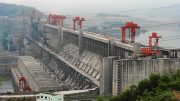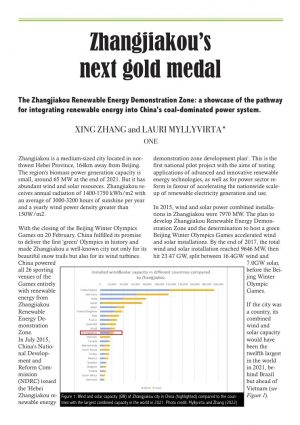 Zhangjiakou is a medium-sized city located in northwest Hebei Province, 164km away from Beijing.
Zhangjiakou is a medium-sized city located in northwest Hebei Province, 164km away from Beijing.
The region’s biomass power generation capacity is small, around 65 MW at the end of 2021. But it has abundant wind and solar resources. Zhangjiakou receives annual radiation of 1400-1750 kWh/m2 with an average of 3000-3200 hours of sunshine per year and a yearly wind power density greater than 150W/m2.
With the closing of the Beijing Winter Olympics Games on 20 February, China fulfilled its promise to deliver the first ‘green’ Olympics in history and made Zhangjiakou a well-known city not only for its beautiful snow trails but also for its wind turbines. China powered all 26 sporting venues of the Games entirely with renewable energy from Zhangjiakou Renewable Energy Demonstration Zone.
In July 2015, China’s National Development and Reform Commission (NDRC) issued the ‘Hebei Zhangjiakou renewable energy demonstration zone development plan’. This is the first national pilot project with the aims of testing applications of advanced and innovative renewable energy technologies, as well as for power sector reform in favour of accelerating the nationwide scale-up of renewable electricity generation and use.
In 2015, wind and solar power combined installations in Zhangjiakou were 7970 MW. The plan to develop Zhangjiakou Renewable Energy Demonstration Zone and the determination to host a green Beijing Winter Olympics Games accelerated wind and solar installations. By the end of 2017, the total wind and solar installation reached 9646 MW, then hit 23.47 GW, split between 16.4GW wind and 7.0GW solar, before the Beijing Winter Olympic Games.
If the city was a country, its combined wind and solar capacity would have been the twelfth largest in the world in 2021, behind Brazil but ahead of Vietnam (see Figure 1).
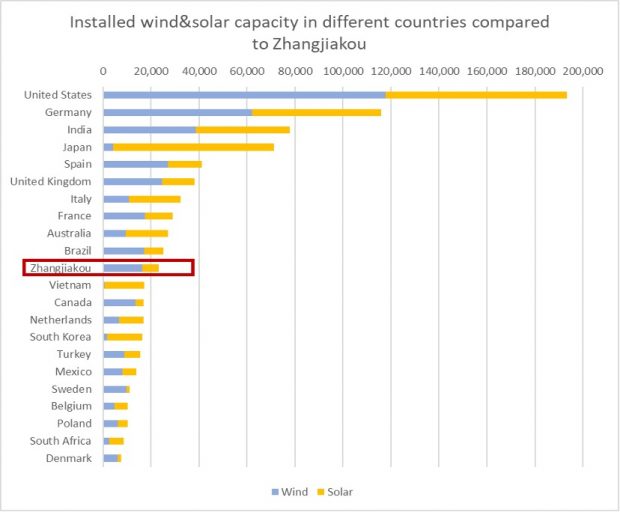
Figure 1 . Wind and solar capacity (GW) of Zhangjiakou city in China (highlighted) compared to the countries with the largest combined capacity in the world in 2021 (Myllyvirta and Zhang, 2022)
The construction of the Zhangbei renewable energy flexible direct current (DC) grid was also accelerated to improve the power transmission capacity of the demonstration zone, resulting in the launch of the $2bn project in June 2020.
As shown in Figure 2, two converter stations, Zhangbei and Kangbao, are used to gather local wind and solar energy. Fengning converter station is connected to a local pumped storage hydropower plant which can restrain renewable energy power fluctuation. Beijing converter station is connected to the Beijing power grid to provide stable green electricity for Beijing, used at the venues of the Winter Olympic Games.
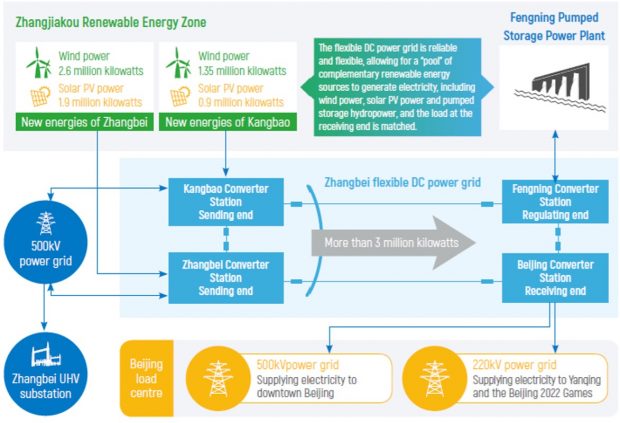
Figure 2 . Zhangbei renewable energy flexible DC grid (Beijing Organising Committee for the 2022 Olympic and Paralympic Games, January 2022)
China has deployed two types of UHV lines. Direct current (UHVDC) lines are suitable for very long-distance (over 1000 kilometres) transmission. In contrast, alternating current (UHVAC) lines work better over slightly shorter distances but permit branching links along the way. UHVDC technology is used for the Zhangbei flexible green grid.
In addition to the grid linking Zhangjiakou to Beijing, Zhangjiakou’s renewable energy feed a direct long-distance transmission line built to power the new city of Xiong’an, China’s “city of the future”, being built outside of Beijing (see Figure 3).
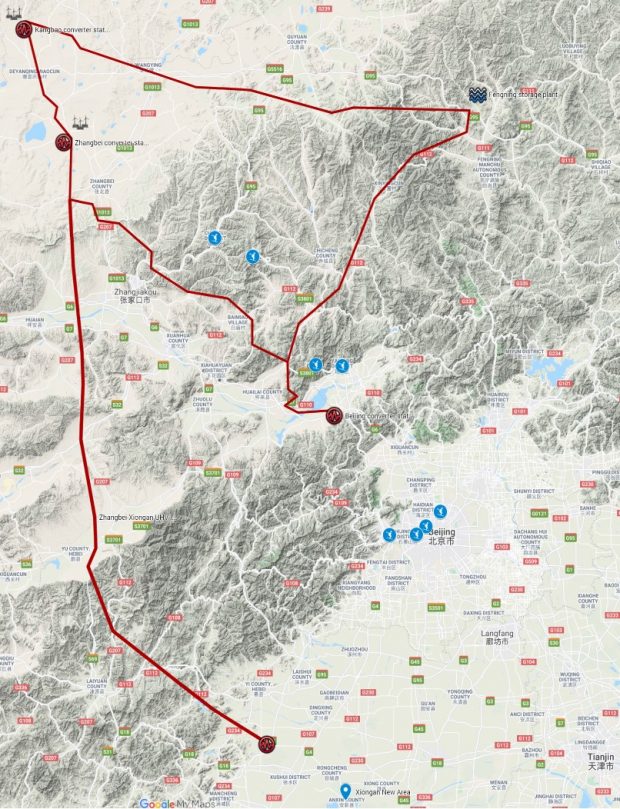
Figure 3. Project map for the Zhangjiakou green grid and the Zhangbei-Xiongan UHV line (Myllyvirta and Zhang, 2022)
Zhangjiakou’s wind and solar energy can generate about 44 TWh per year. The city’s consumption is about 19 TWh, leaving about 25 TWh for exports.
The green flexible DC grid is projected to transmit about 14 TWh of renewable energy from Zhangjiakou to Beijing every year, equivalent to approximately 10% of the electricity consumption of China’s capital. Another 7 TWh per year will be transmitted to Xiong’an.
A long-standing challenge with China’s long-distance transmission lines has been their inflexible operation, which has meant that much of the power dispatched through the lines has been generated from coal.
The Zhangjiakou Renewable Energy Demonstration Zone project exhibited a new institutional set-up required for the power grid to absorb high shares of intermittent generation, at least as much as new hardware. It strengthened the competitive position of far-reaching clean energy against local coal-fired power plants.
Zhangjiakou aims to reach 50 GW combined wind and solar power generation by 2030, more than double its current capacity. On an even larger scale, China’s NDRC announced the first batch of projects and plans for 100 GW capacity of “clean energy bases” in the Gobi and desert areas last December, and has recently announced the second batch, with 455 GW capacity of wind and solar to be installed by 2030.
During the 14th Five Year Plan (FYP) period, 200 GW wind and solar energy will be installed at the clean energy bases, and 150 GW will be exported. During the 15th FYP period, 255 GW clean energy will be installed with 165 GW to be exported. The bases will be a vast regional network of wind and solar power installations designed to transmit power to the more densely populated areas.
However, fossil-fuelled power generation continued to grow. 33 GW of new coal power plants entered into construction in 2021, the most since 2016. Five coal power projects totalling 7.3 GW of capacity cleared for construction in just the first six weeks of this year.
This might appear paradoxical, as renewable energy has a clear cost advantage against new coal power, especially after the increases in tariffs paid to coal power plants late last year. In response to the coal shortage and power crisis, the government allowed tariffs paid to coal plants to rise to 20% above the province-specific benchmark prices.
The critical issue determining the pace of China’s transition is the decision makers’ confidence that clean electricity can keep the lights on without further additions of coal-fired capacity. Pioneering regional grids with a high share of renewable energy, especially a grid that powers the top decision makers’ own offices in Beijing, Zhangjiakou Renewable Energy Demonstration Zone has broader national significance in this context.
XING ZHANG and LAURI MYLLYVIRTA*
* Lead analyst at the Centre for Research on Energy and Clean Air



